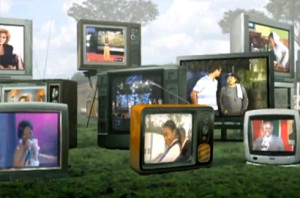
 The Digital Migration in Kenya can be compared to the legendary Wildebeest Migration, one of the “Seven New Wonders of the World” and also known as The World Cup of Wildlife. If there is a safari you should go on, this has to be it. Over two million animals migrate from the Serengeti National Park in Tanzania to the greener pastures of the Maasai Mara National Reserve in Kenya during July through to October.
The Digital Migration in Kenya can be compared to the legendary Wildebeest Migration, one of the “Seven New Wonders of the World” and also known as The World Cup of Wildlife. If there is a safari you should go on, this has to be it. Over two million animals migrate from the Serengeti National Park in Tanzania to the greener pastures of the Maasai Mara National Reserve in Kenya during July through to October.
The migration has to cross the Mara River in the Maasai Mara where crocodiles will prey on them. This is one of the highlights as the animals try and cross the Mara River alive. In the Maasai Mara they will be hunted, stalked, and run down by the larger carnivores since Mara is world’s home for the densities of lion in the world and therefore home of the BBC wildlife channels Big Cat Diary.
However, during the migration all that the wildebeest sees is the greener pasture on the other end, they would rather die trying other than give up, they look at the positive side of the migration, what impact this will have on them and decide to go through all the dangers to make it to the other side because if they choose to stay they are set to die of hunger.
And just like the wildebeest, we need to look at the positive side of digital migration and shun away the little propagandas of how expensive it is to acquire the digital TV sets and how many journalists are set to lose their jobs, the digital migration is an evitable change that we can’t run away from. and unlike the wildebeest we shouldnt go back once w e have our minds made up to move.
We need to first look at why it is important for the world to migrate. The main reason for the world’s migration to digital is to release valuable spectrum which can be used for other services. Spectrum is scarce; therefore more efficient use of the spectrum is necessary if more terrestrial telecommunications and broadcasting services are to be made available. Currently, analogue broadcasting is protected from interference, but this protection will stop by 2015. It is therefore necessary for all countries to complete the migration from analogue to digital by 2015.
First reason as to why we need to take Digital Migration seriously is because Kenya, like other countries party to the ITU GE06 Agreement, is required to comply with the provisions of the Agreement including the analogue switch-off deadline for the following reasons: The digital frequencies under GE06 Agreement are planned in the same frequency bands 174-230 MHz and 470-862 MHz that were used for analogue broadcasting. In addition, Majority of the same analogue TV channels are planned for digital broadcasting hence the two services cannot co-exist as the analogue has to give way for the digital. The full implementation of digital will only be realised after all the analogue channels are switched off.
Secondly the Agreement requires protection of digital frequencies from interference from analogue transmissions at the end of transition period. Subsequent ITU World Radio communication Conferences held in 2007 and 2012 have made frequency allocations for other services to parts of the frequency bands (694-862 MHz) originally used for analogue TV broadcasting with full understanding that broadcasting services will vacate these bands. These changes have been incorporated in ITU Radio Regulations which is international treaty on use of frequency spectrum.
Any extended operation of analogue TV in the frequency band after the deadline will be incompatible with the other services allocated. Kenya must protect frequencies of neighbouring countries from interference. Continued operation of analogue TV frequencies beyond the set deadline will result in violation of rights of the neighbours who will continually be interfered with, in addition to violating the ITU Radio Regulations and Agreement. This provides a fertile ground for disputes with neighbouring countries.
As of June 2014, only 9 countries in Africa had officially launched national analogue switch off and as of Jan. 2014, only 2 countries completed ASO (analogue switch off) that’s Tanzania (partly) and Mauritius.
Close to 2.5 million homes (2.5% the total number of TV households in Africa, and growing) now have access to DTT bouquets either on a pay or free-basis according to various sources, including recent claims made by DTT players like StarTime and GOtv executives.
In theory and certainly from 2015, Africa’s 100 million TV households will be able to access many more free digital TV channels in better quality. This represents lots of sales of DTT set-top boxes and digitally enabled televisions. But the difference between 2.5 million and 100 million DTT households is a very wide gap to close.
Globally countries that have fully migrated to Digital platforms include: Netherlands, Finland, Sweden, Switzerland, Germany, Isle of Man, Denmark, Norway, Belgium, Spain, Jersey and Guernsey, Croatia, Slovenia, San Marino Luxembourg, Monaco, Austria, Cyprus Malta, France, Portugal, Czech Republic, Italy, United Kingdom and Ireland, Lithuania, Slovakia, Gibraltar, Macedonia, Poland, Bulgaria, Hungary, Israel, Saudi Arabia, Japan, Qatar, Taiwan, South Korea, United Arab Emirates, New Zealand and Australia.
Another reason why we should take Digital Migration seriously is the fact that it comes with huge benefits. The benefits that come with Digital migration include higher video and sound quality. The Digital platform also supports High Definition TV (HDTV), mobile TV, thus offering a wider choice of enhanced broadcasting applications, multimedia data and entertainment services on the same platform. Consumers stand a chance to save because they will no longer need multiple TV aerials. Consumers will also have a diversity of content for who can now access a variety of TV programmes according to their viewing preferences for example, programmes on sports, health, education, agriculture, culture, entertainment, business, religion, etc.
With the migration more job opportunities will emerge in the creative industry through increased local programme production and demand for content by increase number of new TV channels/broadcasters. The migration to the digital platform will also facilitate sharing of infrastructure such as towers or masts, buildings, equipment, standby generators, electricity power supply and land hence saving on foreign exchange and capital expenditure on infrastructure. This scenario presents less access barriers for new entrants,
Digital Migration will see capacity to accommodate more players hence increased competition in the sector resulting in lower costs for consumers i.e. reduced advertising rates or airtime, higher efficiency in utilization of the scarce frequency spectrum resource resulting in a digital dividend (freed frequencies) to support new services such as mobile and broadband which will bring immense benefits to Kenyans.
Increased revenue for Government in form of direct or indirect taxes emanating from new businesses as well as from employment created, and, facilitates environmental conservation through use of fewer transmitters, towers, less power consumption, less radiation could be added advantages that come with the migration.
So like the wildebeest we stand no choice, challenges are there but we need to comply or languish as a nation. If we don’t technology will always evolve and we will then remain a step behind.




One Comment